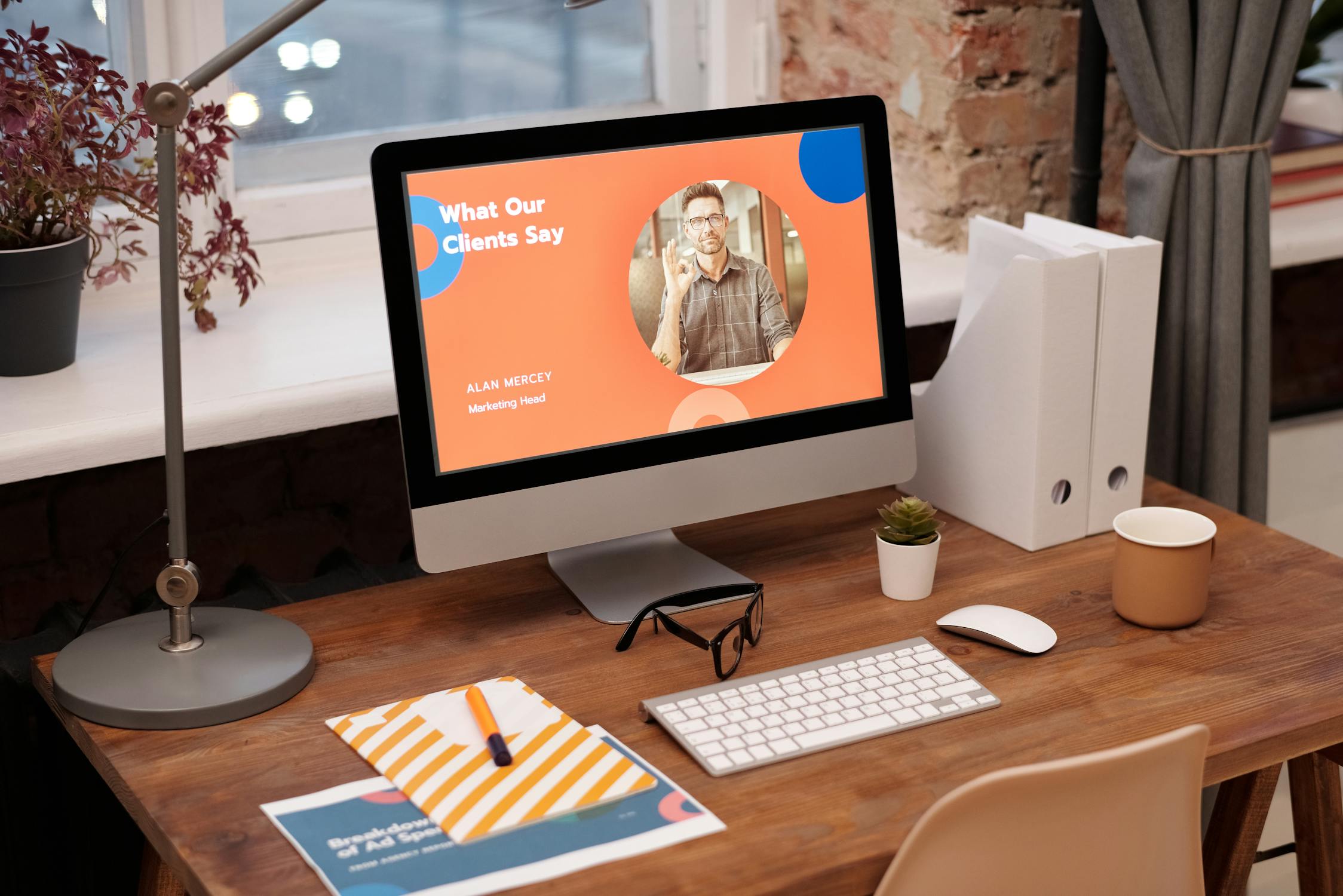How to Create a Remote Job Portfolio and Get Hired by Standing Out?
Learn How to Get Ahead By Building a Unique Portfolio For Remote Positions
In the remote job market, standing out from the crowd is key, and what better way to do that than with a killer job portfolio? Think of it as your professional highlight reel, showcasing your best work and accomplishments. It's not just a collection of past projects; it’s a testament to your skills, creativity, and expertise. A well-crafted portfolio can make all the difference, transforming you from just another applicant to a memorable candidate.
If the idea of building a portfolio feels daunting, don't worry – you're not alone. Many job seekers find themselves at a standstill, unsure where to start. But that's exactly why we're here. In this guide, you'll discover practical tips and best practices to craft a portfolio that not only highlights your achievements but also resonates with remote employers. We'll also take a look at some real-world examples to give you a taste of what successful portfolios look like. Let's dive in and set the stage for your remote job success.

Getting Started With a Remote Job Portfolio
Embarking on creating a remote job portfolio? Let's tackle some questions to get you rolling. A remote job portfolio is your digital showcase, a collection that tells the story of your professional journey, highlighting your most impressive achievements. It's your chance to display your unique skills and personality, but in a professional context. Unlike a personal website, which might delve into hobbies or personal musings, your job portfolio is laser-focused on showing potential employers why you're the top pick.
What should you include? Think about tangible examples of your work that speak to your industry and role. This might be coding samples for developers, marketing campaigns for digital marketers, or design portfolios for graphic artists. Don't have a ton of experience yet? No problem. Create sample projects or mock-ups that showcase your potential. This approach demonstrates not just your ability but also your initiative and creativity.
And yes, a job portfolio is pretty much essential for landing that remote role. It does more than just complement your resume; it brings your skills to life. With a well-crafted portfolio, you're not just another candidate – you become a memorable prospect with visible proof of your talents. Plus, an SEO-optimized portfolio can draw in job offers and connections organically, expanding your reach far beyond traditional job applications.
How Do I Start Standing Our with My Remote Job Portfolio
1. Select the Perfect Platform for Your Portfolio?
Picking where to host your remote job portfolio is a crucial decision. You want a platform that not only showcases your work but also tells your professional story. Whether it's a specialized site tailored to your industry or a more versatile personal website, your choice should reflect your career and individual style. Platforms like WordPress, Squarespace, or Wix offer the freedom to create a rich, interactive portfolio that goes beyond just displaying your work – they let you narrate your career journey and showcase your personality.
The platform you choose is more than just a digital space for your portfolio; it's the first impression you make on potential employers. It should be easy to navigate, visually appealing, and reflective of your professional brand. This is your opportunity to stand out in the remote job market, so select a platform that lets you put your best foot forward.
2. Define Your Branding and Set Clear Goals
Stepping into the realm of remote work means showcasing yourself uniquely and effectively. Start by defining your personal brand. This isn't just about your skills, it's about the story behind them. What unique traits do you bring to the table? How do these qualities translate into benefits for a potential employer? Your portfolio should be a reflection of your professional ethos and style, effectively communicating your strengths and how you're a valuable addition to any remote team.
Your visual branding is as important as the content itself. Choosing the right color palette and design layout not only makes your portfolio aesthetically pleasing but also reflects your personality. Opt for a scheme that complements, not overshadows, your professional achievements. And when it comes to content, think beyond just listing your experience. Use sections like 'About Me' to give insight into your professional journey and personality, 'Resume' to outline your career timeline, and a dedicated page for 'Achievements' and notable accolades. These elements combined create a compelling narrative that captivates potential employers.
Lastly, make sure your portfolio is user-friendly and accessible. Whether a visitor is on desktop or mobile, the experience should be seamless and engaging. A well-organized portfolio with clear navigation ensures your work is displayed effectively, and key decision-makers can easily find what they're looking for. Including personal photographs can add a touch of authenticity, making your portfolio more relatable and leaving a lasting impression. Remember, your portfolio is more than a collection of work; it's a testament to your professional journey, ready to take you to the next step in your remote career.

3. Craft a Visually Stunning Showcase of Top Projects
When creating your remote job portfolio, think of it as an art gallery where you display your best work. Your goal is to capture and hold the attention of visitors – potential employers, in this case. Begin by selecting the projects that you're most proud of, the ones that best represent your skills and potential. Place these works front and center. Remember, in the digital world, you have mere moments to make an impact, so lead with your strongest pieces.
The layout of your portfolio is crucial. Opt for a clean, single-page design that allows viewers to grasp your capabilities at a glance. Thumbnails can be a great way to offer a snapshot view of your work. For each project, include a brief description and the option to delve deeper on a separate page. This way, you provide context without overwhelming the visitor. And if your work isn't visually oriented – say you're in a field like data analysis or programming – focus on clear, concise descriptions of your projects and the impact they made. You can also include links to live examples or detailed case studies to showcase your contributions in action.
Experimenting with different presentation styles can help you find the perfect format for your work. The key is to ensure that your portfolio is not just informative but also visually appealing and easy to navigate. This balance will help your portfolio stand out and make a memorable impression on those who view it, increasing your chances of catching the eye of your next remote employer.
4. Incorporate Social Proof to Boost Credibility
Let's talk about giving your remote job portfolio a serious credibility boost. How? By sprinkling in some social proof. Think of it as your professional fan club – testimonials from past clients, a thumbs-up from previous employers, or accolades from your mentors. It’s like having industry insiders vouch for you. And if you've worked with recognizable names or brands, flaunt those logos!
It's not just about you saying you're awesome at your job; it's about showing that others think the same. This kind of endorsement can be a game-changer, turning your portfolio from just another webpage into a compelling story of a professional who's genuinely respected and valued in their field.
5. Engage in Blogging for Enhanced SEO Advantages
Adding a blog to your remote job portfolio isn't just about sharing your thoughts or experiences; it's a strategic move for SEO. Think of each blog post as a new opportunity to show up in search engine results. By regularly updating your blog with industry-relevant content, you're not just engaging your audience, you're also telling search engines that your site is active and relevant. This can lead to higher rankings and, ultimately, more visibility for your portfolio. Use keywords that align with your skills and industry to make your blog and portfolio more discoverable to potential employers who are searching for talent like you.
Besides boosting your SEO, blogging is a fantastic way to demonstrate your expertise and insights. Share your professional journey, discuss trends in your field, or offer solutions to common industry challenges. This establishes you as a thought leader and gives your portfolio an edge. Your blog becomes a place where potential employers can get to know your professional personality and your approach to work, making your portfolio more than just a showcase of past projects – it becomes a reflection of your ongoing engagement with your profession.

Now You're Ready to Build your Digital Portfolio!
Wrapping up, building an effective remote job portfolio is less about self-promotion and more about self-expression. It's your opportunity to show potential employers the full spectrum of your talents and achievements. A well-crafted portfolio doesn't just display your past work; it opens doors to new opportunities and sets you apart in the digital job market.
Remember, it's not bragging if it's based on your real accomplishments. So, once you've polished your portfolio, make sure to integrate it everywhere – from your LinkedIn profile to your email signature. Let it be the bridge that connects you to your next great remote opportunity, putting you one step ahead in your career journey.
If you're ready to start remote job hunting come check out our jobs on Work Remote Now!. We provide the best and latest jobs across the globe. If you want to network easier and get increased opportunities for jobs without applying checkout our membership that allows you to showcase your portfolio directly to employers!

